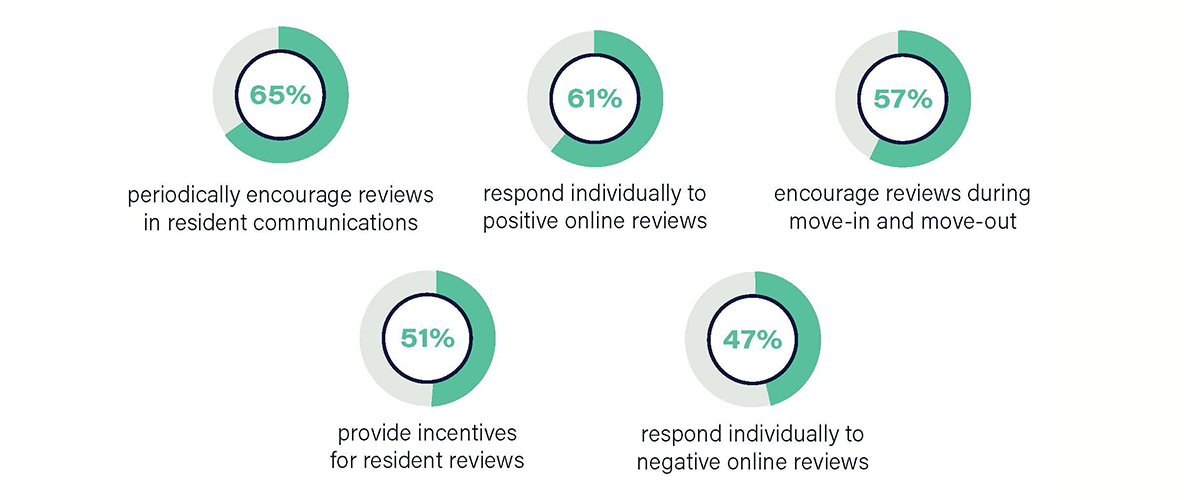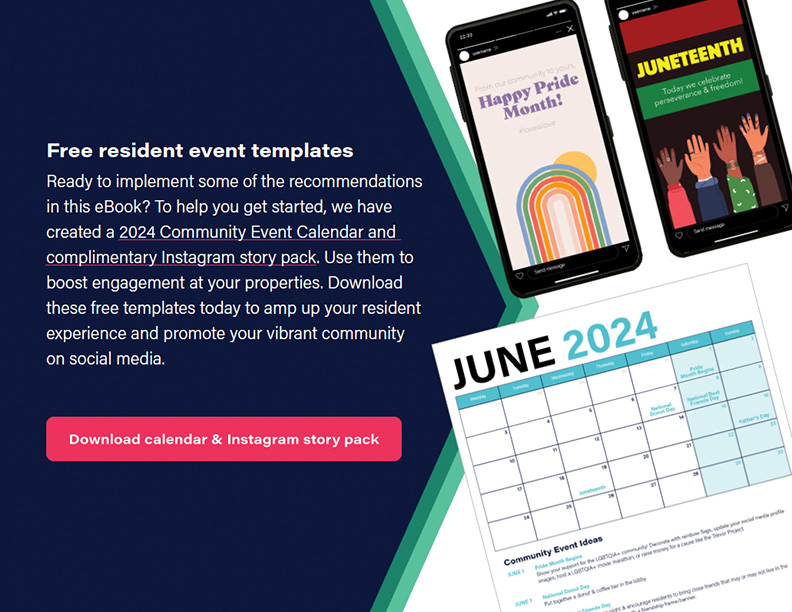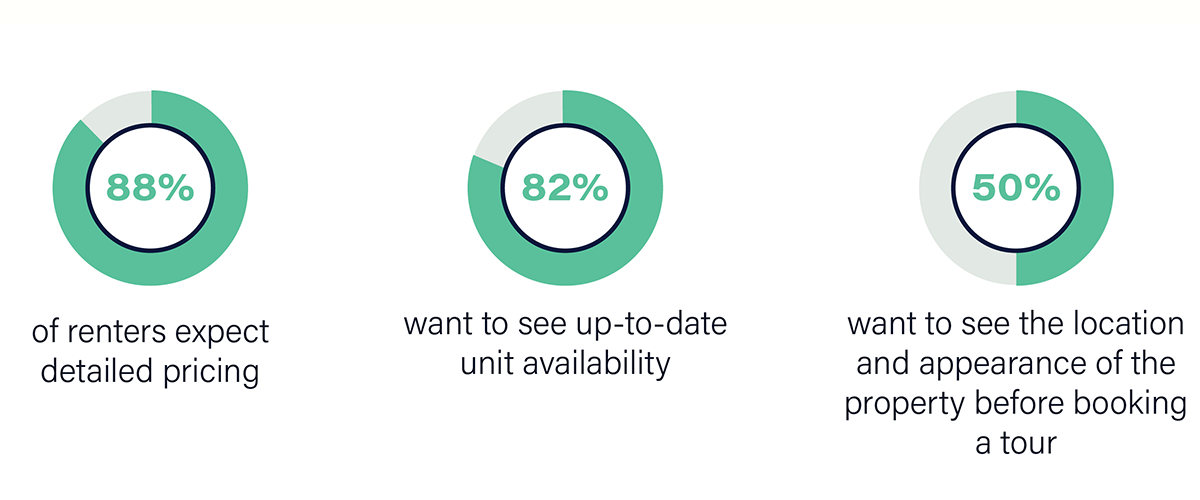10 Do’s & Don’ts of Property Management Marketing
Ten tips from property management marketing experts on how to market multifamily properties to attract and retain modern renters.
Does your property management marketing plan attract the modern renter?
The property management marketing landscape is hard to navigate in today’s digital world. Renter preferences and expectations have shifted, and the number of digital marketing channels and strategies has grown exponentially. From social media, to paid advertising, to brand strategy, and more, it’s tough to know where to focus your efforts.
Our Zego team has interviewed a number of property management marketing experts who have provided 10 key Do’s and Don’ts to help you avoid common mistakes and try new tactics that produce results.
10 Property Management Marketing Do’s and Don’ts:
-
- Don’t: De-value the digital lead
- Do: Pick your battles with social media
- Don’t: Ignore your online reviews and reputation
- Don’t: Catfish your community
- Do: Opt for information overload
- Don’t: Procrastinate on your follow-up
- Do: Use data to inform your property management marketing decisions
- Do: Create a brand strategy for different renter demographics
- Don’t: Get stuck in a creativity cul-de-sac
- Do: Welcome ideas and feedback on your property marketing campaigns
How to own your digital marketing
1. Don’t: De-value the digital lead
Traditional, in-person leads are valuable. But in this digital era, they should not be your main focus. Opportunities that come through digital channels are more powerful than in-person leads who stumble across your property. That’s because most digital leads have already scoured your website, selecting the exact apartment specifications they’re looking for. They are handing you the information you need to convert them into residents.
Joe Melton, VP of Marketing & Management Support Services for the Morgan Group says the best lead is the one who is sitting at home on their computer, filling out your online application. “This is the most honest, true lead you can get,” says Melton. “Those opportunities are powerful. They’re the best information to work from, and so we try to engage and take as much advantage of that as we can.”
“At the end of the day, that’s the best thing we can get from an opportunity is honesty.”
2. Do: Pick your battles with social media
There’s no denying that social media has become a powerful tool that multifamily marketers often underutilize. In an interview for Zego’s Resident Experience Podcast, Barbara Savona, CEO of Sprout Multifamily Marketing, pointed out that these social platforms with massive audiences of young renters present a huge opportunity for multifamily marketers. “Specifically, reels and TikTok videos, you just get an engagement and a reach that you just cannot get in any other way,” Savona states. “It’s like a 15-32 second, free commercial for your community. But, it does take a little personality and just a little bit of confidence.”
What’s her advice for property management marketing professionals that want to expand their brand’s reach on social? Pick your battles! Don’t create a Twitter, Instagram, Facebook, LinkedIn, and Pinterest account if you don’t have the systems and people in place to support them all.
Property management social media ideas
First, ask yourself a series of questions:
- What will you post?
- How often will you post?
- Who will be in charge of creating and scheduling the posts?
- Who will respond to comments and messages, and act as the voice of the brand?
Once you’ve narrowed down the posting plan, pick a channel or two that your team is already familiar with. “If they’re great on Instagram, they’re more likely going to post on Instagram because they enjoy the platform,” says Savona.
Property management calendar and instagram story templates
Need ideas for posts on social media? Get started with our 2025 Community Event Calendar and complimentary Instagram story pack. Download these free templates today to amp up your resident experience and promote your vibrant community on social media.

3. Don’t: Ignore your online reviews & reputation
According to NMHC, 69% of renters looked at property ratings and reviews online during their last apartment search, and 84% said the content of the reviews influenced their leasing decision. Now that reading reviews is a common step in apartment hunting, online reputation management has become a crucial piece of the property management marketing playbook.
What are communities doing to encourage more positive reviews?

While positive reviews are extremely valuable, they can be hard to procure. Just like Uber, the best time to capture reviews is at the point of transaction, including right after a community event and right after a resident signs a renewal. Once a maintenance request is completed, it should immediately be followed up with a “How did we do?” email linking to your Google My Business or Yelp page. Then highlight your best reviews throughout your homepage, marketing emails, paid ads, and social media channels.
Percentage of multifamily online reviews by review sites

As for those negative reviews, Jered Lerum, Director of Business Development at Edison47, says what matters is how communities respond to complaints. “What do you say when things go sideways? Because they will… whether they’re construction-related or environmental.” When a resident has an issue, how should you respond? Jered says it’s important to first validate the concern. Phrases such as, “I’m so sorry that happened,” “we are checking into it,” and “thank you for bringing that to our attention” can help mitigate the situation. Don’t leave the resident feeling sour. As Jered says, “it is the last impression that is the lasting impression.”
How to make your community shine in your property management marketing
4. Don’t: Catfish your community
You may be a top-notch property marketer with fabulous photoshop skills and an arsenal of witty quips and captions. But, if you try to trick prospective renters with filtered or doctored photos and a property description that doesn’t align with the community, that’s a short con. People will find out.
Barbara Savona agrees. “Nowadays the renter can speak from the rooftops. And so to me, that’s one of the biggest mistakes is really looking at a short term gain versus a long term reputation.”
5. Do: Opt for information overload
The sales funnel has been flipped. Before they reach out to you, residents are conducting their own research online to narrow down the exact apartment specs they’re looking for. And, with an abundance of listings flooding the ILS, you might only get one shot to impress a potential renter. Don’t blow your chances by withholding information. Today’s renters are hesitant to book a tour if they are unable to first verify that your unit checks off all their boxes.
This means you need to provide as much information on the property and unit as you possibly can online. According to the NMHC Renter Preferences Report, 51% of respondents said that knowing the rental rate was absolutely essential before booking a tour.
What information do apartment hunters expect to find online?
Lean into property differentiators
Beyond essential information such as pricing and availability, be sure to include any competitive differentiators in each listing. Here are some examples:
- Brag about your maintenance team: According to the NMHC Report, 50% of respondents said the biggest benefit of renting vs. buying is that it offers maintenance-free living. Do you have a stellar maintenance team with an intuitive work order app that allows residents to easily submit and track service requests? If so, mention that in your listing.
- Showcase any WFH benefits: 2022 survey results showed that 45% of residents work remotely full-time or at least several days a week. And 65% said it was important to have a flexible space that could transform to meet different needs, such as a home office nook. Do you have a coworking space, property-wide wi-fi, or conference rooms? If so, having that information online could set you apart from competitors right from the get-go.
- Welcome four-legged family members: NMHC reported that over one third of renters (36%) are pet or service animal owners. If you are a pet-friendly community, spread the word!
- Mention your top rated amenities & features:
Below are the top 7 amenities from the 2022 NMHC report in order. Include these items in your listings if you offer them.
-
- Washer / Dryer in Unit
- Air Conditioning
- Soundproof Walls
- High-speed Internet Access
- Garbage Disposal
- Walk-in Closet
- Dishwasher
Below are renters’ top 6 highest-rated features listed in order. Be sure to advertise which of them you offer at your property.
-
- Reliable Cell Reception
- Secure Self-service 24/7 Package Access
- Swimming Pool
- Controlled Property / Amenity Access
- Non-smoking Buildings
- Fitness Center
6. Don’t: Procrastinate on your follow-up
Research shows that the multifamily industry is slow to follow up with prospects. Just by following up within 24 hours, you’ve already got a leg up on your competition.
You also have the opportunity to stand out with a memorable, creative follow-up flow. Don’t be afraid to showcase your community’s personality by including a funny meme, or a fun photo from a recent resident event in your email.
How to continually improve your multifamily property marketing plan
7. Do: Use data to inform your property management marketing decisions
You can use data to influence decisions from the top of the funnel, all the way down. “I like to break up KPIs more formally into three buckets: sales, your existing customer, and marketing,” says Melton. Starting at the top of the funnel with website traffic, to the middle with new heads on beds, all the way to the bottom with reputation management, resident satisfaction, and renewals.
According to Melton, here are the KPIs worth tracking throughout the sales funnel to help you make more informed property management marketing decisions. These KPIs will help you allocate precious resources to the best performing channels.
Property Marketing KPIs to track:
- Marketing: Track the traffic to your website, your qualified leads, conversions, your PPC metrics, and your SEO keywords and competition.
- Sales: Track the number of leases signed, average price per square foot, and number of qualified leads.
- Reputation management: Track your online review scores across Google, Yelp, Facebook, etc. Track how quickly resident issues are resolved, and pay attention to how these numbers correlate with your retention rate.
Webinar: Marketing Your Multifamily Property Effectively
Zego and three property marketing experts discuss modern trends among multifamily marketing, the best digital marketing strategies for your community, and the most effective technologies for prospect-to-resident conversion.
8. Do: Create a brand strategy for different renter demographics
Nichole Oswald, Regional Property Manager at RPM Living, predicts that the next big trend in property management marketing will be creating a brand strategy and categorizing your communities by brand. Portfolio-wide marketing doesn’t let you drill down on different renter personas. You need to look at each individual asset and treat it locally.
“You have your class A assets that are at the top of the market and they’re providing awesome resident experiences, which is great. But you can still provide awesome resident experiences at class C products. You just have to do it right and you have to figure out what your brand image is for your C assets. What do you hope to provide to your residents?” says Oswald.
It starts with pulling the demographics of your existing residents at each community and then building personas based on your different asset classes and markets. “Creating those personas and figuring out who typically rents with your portfolio of brands. And then creating a strategy around that and figuring out what experiences you can give to each of those communities, each of those residents. So that they know when [they] go to community X, [they] can expect a higher level of service. Or when [they] go to community Y, it’s going to be a little more budget friendly,” Oswald explains. “I think that’s really where the future of our industry is headed.”
9. Don’t: Get stuck in a creativity cul-de-sac
Don’t spend too much time trying to design the perfect logo or the perfect flier that you end up missing out on reaching potential renters. Get your message out into the world, even if your property management marketing materials aren’t absolutely perfect.
Savona calls it a ‘creativity cul-de-sac.’ “You go nowhere. You’re wasting energy,” she says. For example, her team has spun their wheels trying to design the perfect logo for her clients, and the simplest design is the one they choose. “Is a logo important? Absolutely. But is it important enough to halt progress? No, it’s not.”
10. Do: Welcome ideas and feedback on your property marketing campaigns
Your community managers and regional managers are in the field, learning and understanding residents’ current wants and needs. Take your managers’ feedback and use it to drive success in your property management marketing efforts.
Plus, asking for their help might empower them to proactively think of future campaign ideas that will resonate with your target audience.
The guide to creating a modern marketing plan
These do’s & don’ts barely scratch the surface of current industry trends and property management marketing best practices. Multifamily marketing experts revealed their strategies for the prospect-to-resident journey, which can be found in our free digital guide, Multifamily Property Marketing for the Resident Experience Revolution.
FREE DOWNLOAD Explore property marketing trends impacting the industry, marketing ideas for property management, and learn how to create a multifamily marketing plan for the prospect-to-resident experience.


Multifamily Property Marketing for the Resident Experience Revolution
